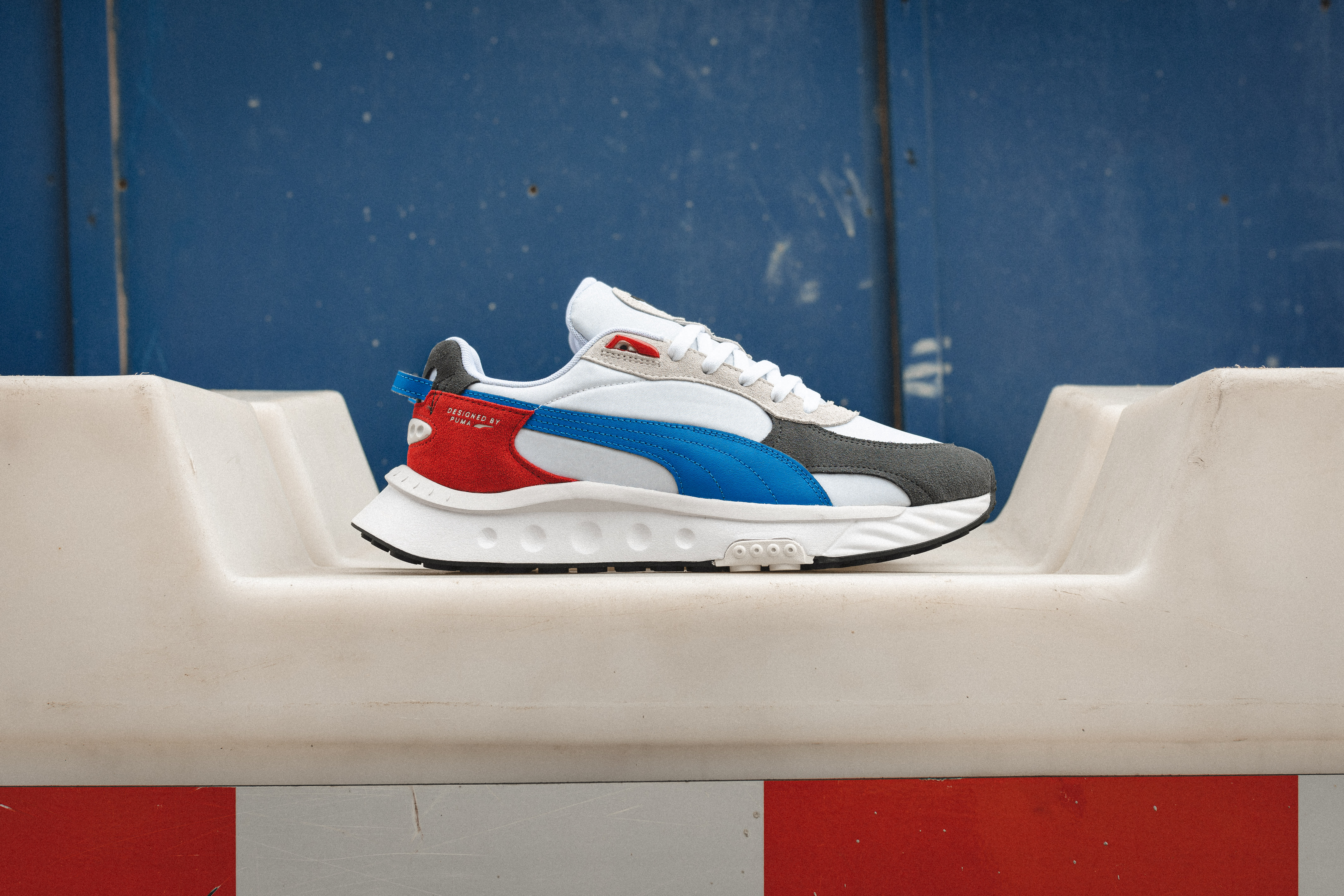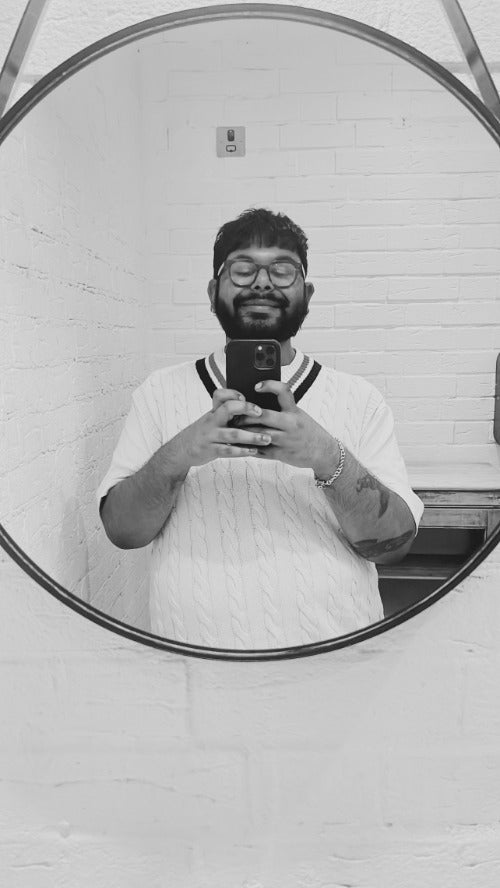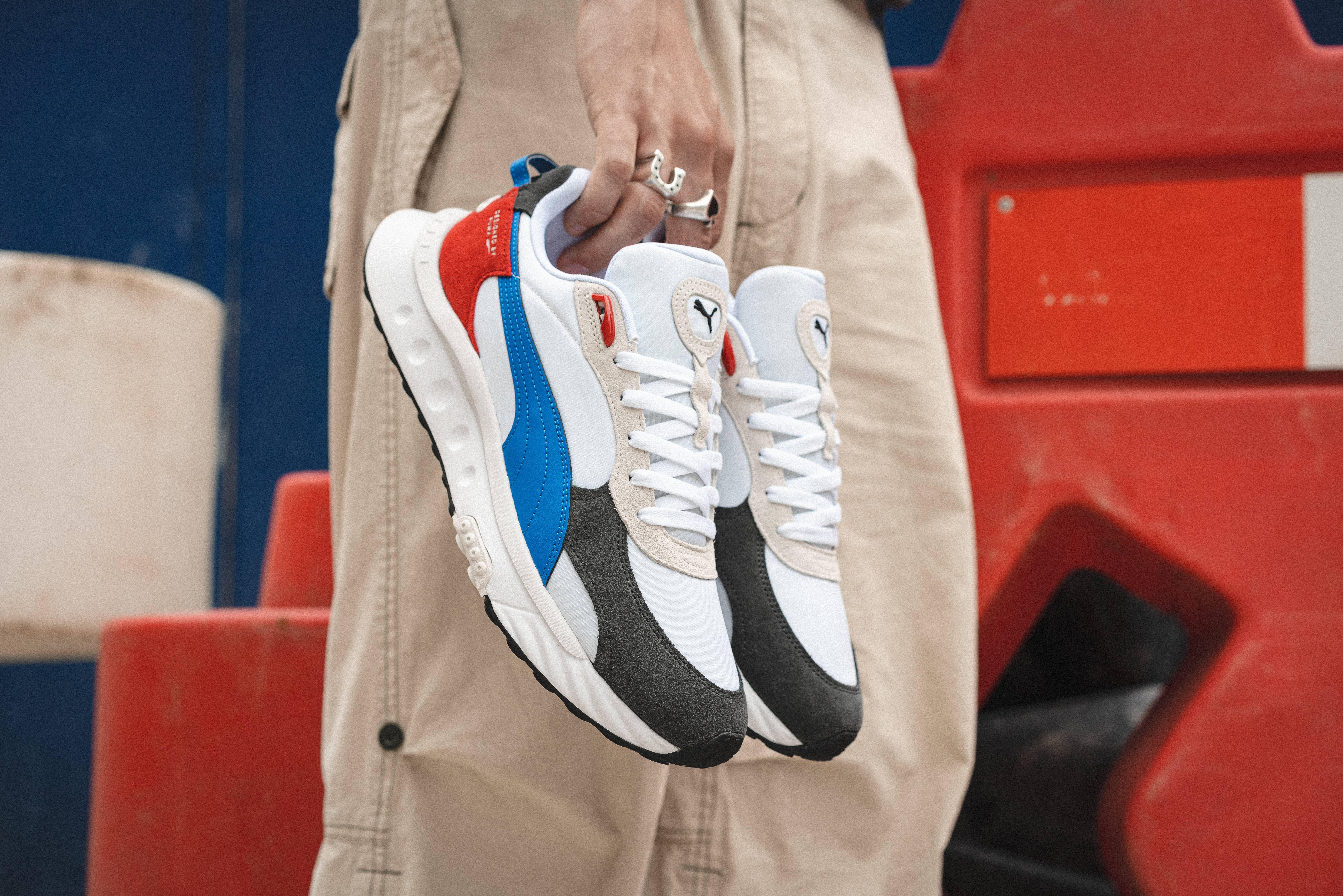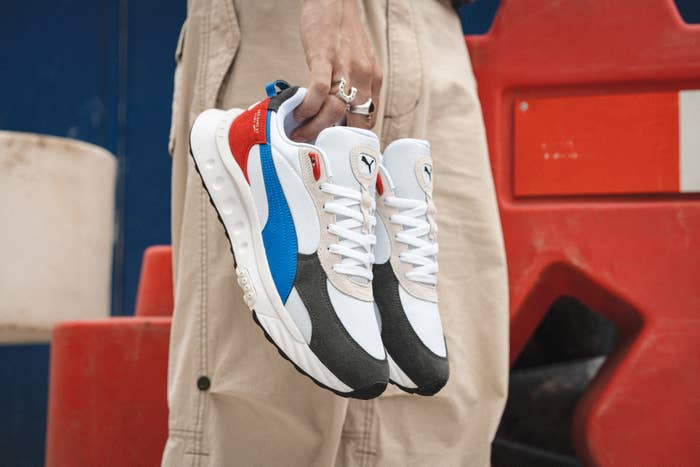
Everything in Daniel Taylor’s life has always been a natural progression, from studying industrial design—when he cited fashion and its respective subcultures as a key inspiration—to developing the design language of PUMA today.
A decade on from college, after working first at PUMA HQ in Germany, and now as Global design lead for Sportstyle footwear, based in Tokyo, it’s fair to say that the launch of the PUMA Wild Rider has come as a natural progression, too.
The brainchild of Taylor and the wider PUMA Sportstyle team, the Wild Rider serves up a fresh take on the PUMA Rider family, offering mixed layers of material and a raw, edgy look. First unveiled in a campaign featuring BMX superstar Ryan Taylor, earlier this year, the silhouette is inspired by the never-ending motion of urban life and incorporates a “future-retro” narrative alongside archive-inspired details for a modern-meets-retro futuristic appeal.
Describing PUMA’s ‘Futro’—aka future-retro—approach to design as “more of a thought process” than a specific aesthetic, it’s arguably the brand’s most versatile calling card. Evident in previous releases, like the RS-X and the Future Rider, the Wild Rider builds on Taylor’s mission to develop styles that are an alternative version of the past, using an obscure ‘90s track spike from the brand’s archive as the basis for its design.
With new iterations set to release later this month, we caught up with Daniel to talk through the brand’s most innovative release, his career highlights, and the future of the Wild Rider collection.
PUMA’s Wild Rider is available to cop now via PUMA.com, PUMA stores and select retailers.
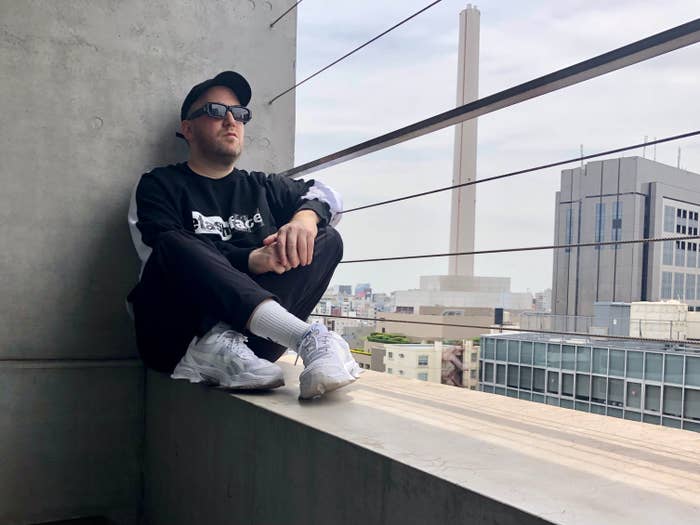
COMPLEX: When did you first realise you had an interest in footwear design, and what encouraged you to pursue it?
Daniel Taylor: Like a lot of people who go into footwear design, I didn’t come from a traditional shoe education background. Whilst studying industrial design, I felt more of an affinity in fashion and subcultures which led me to a career designing sneakers. The idea of telling stories and building narratives through a tangible object is something that fascinated me.
Were there any specific designers that inspired you growing up?
I was never inspired by designers, in the traditional sense. I was always drawn to concept artists or futurists like Syd Mead. Also, movies have and will always be one of my biggest influences—innovative directors like Ridley Scott and Stanley Kubrick have created complex universes and visual languages that continue to impact culture and design as a whole.
You studied sculpture and have a degree in Product and Car Design. How did this lead to your role at PUMA?
Everything up until now has always been a natural progression in terms of creative pursuits, so there was never any question for me of doing something other than art, design or music. I was always obsessed by aesthetics, so combining a sculptural mindset with the practicalities of industrial design, I found that sneaker design gave me an amazing platform to express these ideas.
How did the process for the Rider franchise, and subsequent Wild Rider, come about?
When it comes to taking archive inspiration, in the Sportstyle team at PUMA we have a unique aesthetic and narrative we call ‘Futro’, or future-retro. It’s more of a thought process on how we can interpret past archive styles and details in a modern, retro-futuristic context.
You can see this language develop in previous releases, like the RS family and the Future Rider. We want to build an emotional and authentic connection to our heritage, through new ideas that feel like they’re from an alternative version of the past.
The idea behind Futro allows us to reference different decades, mix them up and combine with modern technologies and construction techniques. It’s a language and idea we can continue to develop over many seasons, constantly evolving it each time.

What is your favourite design detail of the Wild Rider?
The core idea behind this shoe was to combine archive silhouettes and create a very specific language for the shoe. The Rider OG and an obscure ‘90s track spike from our archive served as a basis for the design.
We look at the design as a ‘collage’ of the past and future melted together. You can see this in the tooling and the upper details like the exaggerated iconic circular details of the Rider OG, and the aggressive tooling silhouette.
What influence do you think the Rider franchise is having in today’s culture?
For me, the Rider franchise is about remaining authentic to PUMA as a brand and a legacy. When you’re true to your heritage as a brand, people vibe with it. A franchise like the Rider OG is the archetypal ‘80s runner silhouette, so it’s about how you authentically evolve that for people, whilst remaining true to the lineage and history.

Do you have any labels or individuals that you want to collaborate with next?
Demna Gvasalia, Hajime Sorayama, Raf Simons, Jun Takahashi, and Ash Thorp.
Having worked at PUMA for over 13 years, what are some of your biggest career highlights?
In terms of commercial highlights, the RS-X has been a huge success for PUMA and formed the foundations of a design language that’s had the most impact. Like many products that are successful, it’s one that was designed at just the right time and really connected with people on an emotional level.
Consumer habits are constantly evolving. What are your predictions for the footwear industry?
People are so switched on now. It’s not just about shifting product—they care about what a brand stands for.
In terms of the future of footwear, ideas we would have perceived as science fiction only five years ago are now becoming a reality. The exponential growth in technology is having a major impact on the design and manufacture processes within the industry.
It’s also the acceleration of culture digitally, and through social media, which is influencing what designers do – creatively it’s like stepping into the 4th dimension.
What can we expect from the Wild Rider in the future?
After evolving for almost 40 years as a franchise for PUMA, I would love to imagine how the next generation of designers would reinterpret the shoe in the future. For now, though, we have a big product rollout going forward that I can’t wait to see the launch! There are also some really vibrant colourations and material mixes too.
